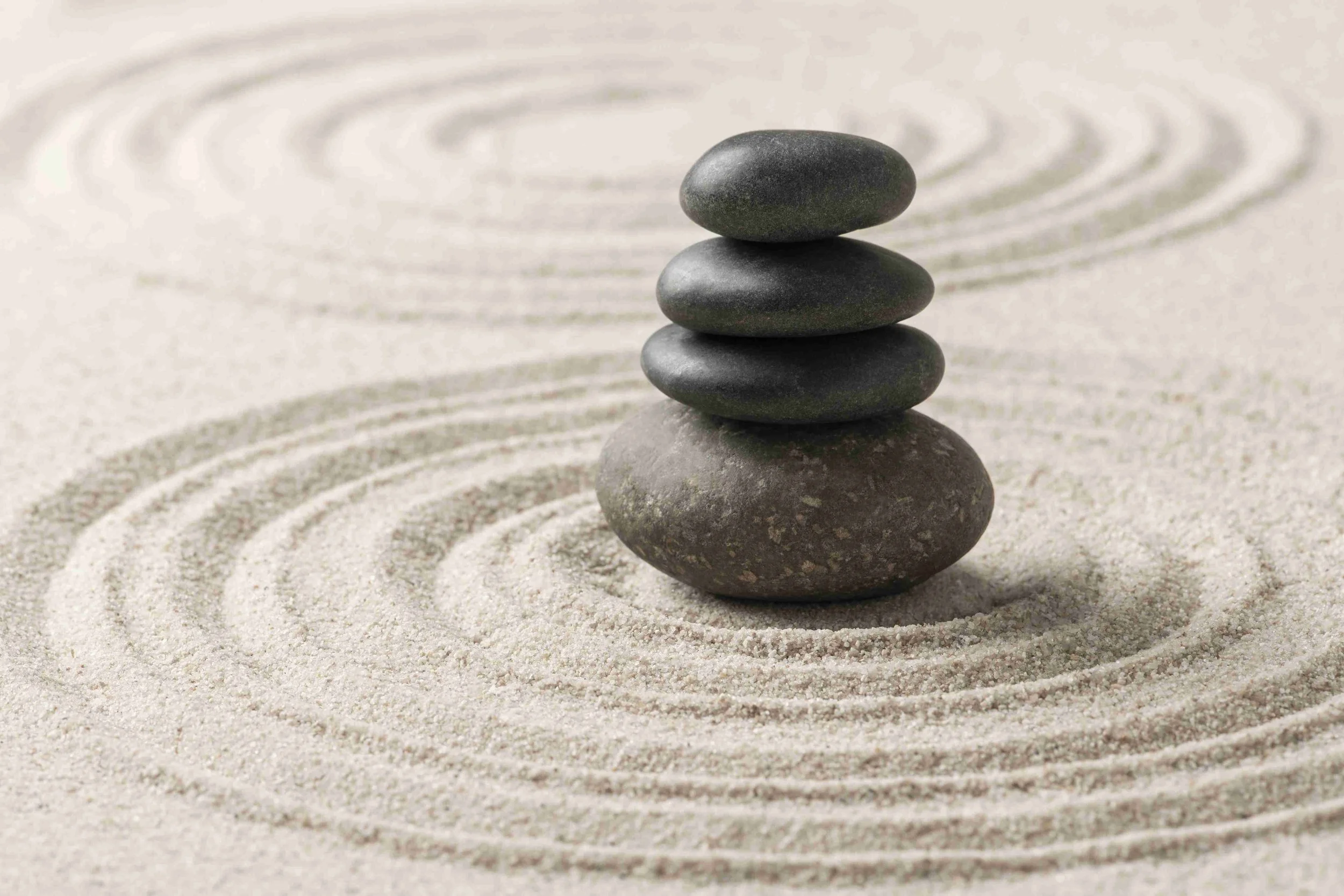Mindfulness & Emotions: How to be Present
Feeling emotionally drained, snappy, or on edge, but not sure why?
In the rush of daily life, our emotions often get buried beneath deadlines, distractions, and self-judgment. That’s where mindfulness becomes a lifeline.
While many of us have heard the term mindfulness, it often feels vague or out of reach. In truth, it's a simple yet powerful practice: being fully present in the moment, aware of what we’re experiencing—our thoughts, emotions, and sensations—without judgment. Instead of reacting or suppressing, we observe with curiosity and acceptance.
And no, you don’t need to retreat to a mountain or sit in silence for hours. It can be as small as pausing to feel the warmth of your morning coffee, noticing the light dancing through the trees, or taking a deep breath during a hectic day. Far from just a wellness buzzword, mindfulness is a practical habit that supports our mental wellness and helps us stay grounded, especially in high-pressure workplaces where employees are expected to perform while navigating complex emotions.
But what happens when we don’t practice mindfulness?
When we lose that connection to the present moment, we often drift into autopilot. Our thoughts race ahead to looming deadlines, endless to-do lists, or anxious “what if” scenarios. In the process, we disconnect from our emotional landscape, until those emotions surface in ways we didn’t expect. You might snap at a colleague, feel drained for no clear reason, or break down in the shower, unsure of what triggered it.
When emotions take the wheel, we lose our ability to respond with clarity. Uncomfortable feelings get pushed aside in hopes they’ll fade, but emotions don’t just vanish. When ignored, they tend to accumulate, increasing our stress and often manifesting in the body as chronic tension, headaches, fatigue, or disrupted sleep.
But first, what mindfulness is not.
Before we get into the benefits, let’s clear up some common misunderstandings. Mindfulness is often misunderstood as something mystical, passive, or time-consuming. In reality, it’s none of these.
Mindfulness isn’t:
Clearing your mind of all thoughts
About always feeling peaceful or positive
Something only “spiritual” or super calm people do
A luxury for people with lots of free time
Mindfulness is a practice, not perfection. It's a skill that anyone, even busy professionals, can cultivate in small moments throughout the day.
Now that we’ve cleared that up, let’s explore how it actually helps our emotional wellbeing.
7 Benefits of Mindfulness at Work and in Life
1. Spot Emotional Triggers Sooner
Many of us react emotionally without realizing why. You may explode in anger or spiral into anxiety before recognizing what set you off.
By staying present, we become more attuned to the early signs of emotion. Those first flickers of stress, sadness, or irritation, before they snowball into full-blown reactions. Tuning in helps us pause and ask:
What am I really feeling?
Where is this coming from?
Is there a deeper need behind this feeling?
For instance, noticing a tightness in your chest when someone criticizes you can reveal a deeper fear of not being good enough. Once you're aware of it, you're empowered to respond more compassionately to yourself and others.
2. Respond More Calmly Under Pressure
One of the biggest mistakes we make is judging our emotions: “I shouldn’t feel this way.” This creates an internal conflict, where we suppress or resist how we feel, often making it worse.
This practice gives us permission to feel what we feel—anxiety, anger, grief—without labeling it as “bad.” Instead of pushing it away, we observe it, creating space between us and our emotions.
Practice saying to yourself: “I notice that I’m feeling anxious right now. I’m not the anxiety itself, I’m the observer.”
This gentle shift allows emotions to move through you, rather than settle in and weigh you down. Supporting this, a 2022 randomized clinical trial published in JAMA Psychiatry found that an 8-week mindfulness-based stress reduction (MBSR) program was as effective as the antidepressant escitalopram (an antidepressant) in reducing symptoms of anxiety disorders, which further reinforces how mindfulness meditation supports anxiety management.
3. Protect Yourself from Stress and Burnout
In high-pressure environments, it’s easy to push through stress until we crash. Self-check-ins invite us to explore our emotional needs before we reach burnout.
By pausing regularly to ask, “What do I need right now?” we may discover we need a break, a boundary, or a simple breath. Breathing exercises are powerful micro-practices that help restore calm in just moments.
In a 2022 Cigna survey, 92% of workers in Singapore reported being stressed. In such a high-pressure environment, cultivating emotional awareness can be a powerful way to build resilience without requiring major lifestyle changes. Even brief moments of mindfulness can make a meaningful difference, helping to counteract the overwhelming tide of stress.
Want more ways to relieve work stress beyond mindfulness? Check out our blog on how to relieve stress at work for simple, practical ideas.
4. Break Free from Negative Thought Loops
Our thoughts, emotions, and behaviors are closely linked. When you’re sad, you might think, “Nothing ever works out for me.” That thought leads to withdrawal, which brings loneliness, and the sadness deepens from there. It’s a feedback loop.
This practice helps break this cycle by disrupting the connection between thought and behavior. You notice the thought, but don’t automatically believe or act on it.
You might say:
“I’m having the thought that I’m a failure. That’s just a thought. It’s not a fact.”
Over time, this awareness builds emotional resilience; the ability to feel without being consumed, and to stay grounded even in the face of life’s challenges.
5. Gain Clarity on What You’re Really Feeling
Mindfulness helps you put clearer names to what you’re feeling. Instead of saying, “I feel bad,” you become better at identifying exactly what you’re feeling, whether it’s disappointment, embarrassment, or fear. This clarity makes emotional regulation much easier.
6. Be Kinder to Yourself in Difficult Moments
One of the lesser-talked-about benefits of mindfulness is how it softens our inner critic. We all have moments of self-judgment, when we feel like we’ve failed or fallen short.
Cultivating awareness encourages us to treat ourselves the way we would treat a friend: with empathy and gentleness. It helps us recognize that being human includes making mistakes, and that we don’t need to beat ourselves up to grow.
7. Connect Better with Others by Understanding Yourself
When we are more aware of our own emotions, we become more attuned to others as well. Mindfulness improves communication by helping us listen more deeply and respond with intention. It reduces misunderstandings and emotional outbursts, allowing for healthier, more supportive interactions.
Whether you're a team leader or a friend, your ability to hold space for others improves when you're able to hold space for yourself first.
5 Simple Ways to Practice Mindfulness (No Yoga Mat Required)
You don’t need to sit cross-legged for 30 minutes a day to get started. Here are some simple ways to bring mindfulness into your day:
Mindful Breathing: Focus on the sensation of your breath entering and leaving your body for one minute. This is one of the most accessible relaxation techniques for stress relief.
Notice your senses: Choose one sense—sight, sound, touch—and pay full attention to what you notice.
Mindful Journaling: Write down how you feel at the start or end of each day. Reflect on emotional triggers and patterns.
Label your emotions: Instead of saying “I’m not okay,” try “I feel overwhelmed,” “I feel unappreciated,” or “I feel anxious.”
Let go of judgment: There’s no “wrong” feeling. Let it be there.
The more you practice in everyday moments, the more natural it becomes, like emotional muscle memory.
New to Mindfulness? These Free Tools Make It Easy to Begin
If you're not sure where to begin, grab our free printable worksheets to kickstart your mindfulness journey:
Helps reframe rigid thoughts and make space for more balanced emotional responses.
A simple reflection tool to explore daily highlights, growth points, and stressors. It’s great for journaling or team check-ins.
Conclusion
Mindfulness isn’t about becoming a Zen master or having zero thoughts. It’s about being curious with your emotions and dropping the judgment. In a world that rewards hustle over presence, mindfulness isn’t just helpful, it’s kind of a superpower.
Emotions don’t vanish just because we ignore them. But when we create space to feel, name, and understand them, they stop driving our actions from the shadows. Mindfulness teaches us to do exactly that. With time, mindfulness deepens our emotional awareness, improves mental health, and strengthens our ability to respond rather than react. Whether you’re juggling deadlines, parenting chaos, or just trying to keep it together, mindfulness helps you meet your emotions without losing yourself in the process.
If you're an HR or team lead looking to bring emotional wellness into the workplace, explore the benefits of company-wide wellness programs in our blog here.
We make it easy for your team to start with beginner-friendly, stress-reducing sessions that meet them where they are. Just fill in the form below to enquire about our wellness programs.
Looking for ideas to bring wellness into your office? Explore our list of engaging, low-effort office wellness activities your team will actually enjoy.


